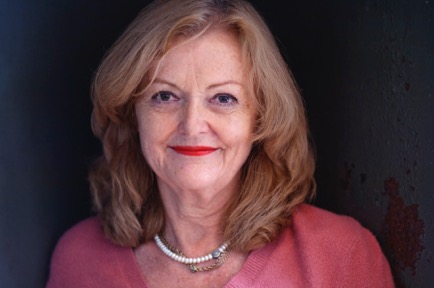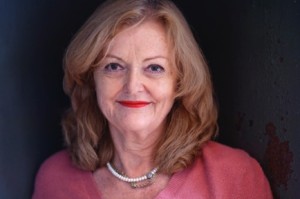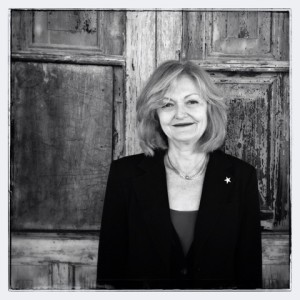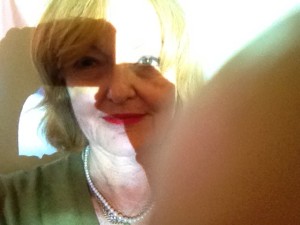Interview with Elisabeth Biondi
When I visited Elisabeth Biondi at her TriBeCa apartment, where she lives with her five-year old dog Boris, she had just returned from teaching at The Photography Master Retreat, a week-long immersive course bringing together a group of international photographers in a small village in southern France to discuss their works. “We eat, drink but most importantly talk about photography twelve hours a day” explained Biondi talking about her experience there as a teacher. Biondi recently co-curated REFUGEE, an exhibition looking at the reasons and impacts of the ongoing refugee crisis, with Patricia Lanza for Los Angeles’ Annenberg Space for Photography.
“I feel lucky to have worked as a photo-editor during what I call the golden age of photography”, says Biondi remembering her days as the photography editor at The New Yorker, where she worked for 15 years and helped create some of the seminal works by Martin Schoeller, Richard Avedon or Helmut Newton.
— In New York you’re widely recognized as the former photo editor of The New Yorker, How was being the decision maker for photography in a publication heavily know for its writing?
It was a particular challenge. When I started working at The New Yorker when Richard Avedon was its only staff photographer. When I got the offer to work there, I was working at Stern in Germany, a weekly magazine, which used photography for all its articles, had a huge staff, 15 staff photographers, and a 7 days a week photo-desk. After that I thought it would be easy to work for a magazine with so few pictures.
After I started working at The New Yorker, I realized it’s really challenging to create photographs for a magazine particularly known for its excellence in words. Every single picture mattered because there were so few. My criteria was ‘intelligent pictures’, knowing the context of the article, which meant I had to make it my business to figure out in what context they would be published. Choosing the photographer, briefing and discussing everything with him or her were all crucial. In the end, it would be one single photograph used for each article, and it had to reflect many facets of a story.
—You started at Penthouse Magazine when you first moved to the U.S. and slowly built yourself a path that led to an impressive career in photo editorship. With the changing face of technology, do you think such direction to success in the field is possible today? What direction would you recommend to new comers?
It vastly changed. Now print is losing leadership and advertising. Budgets have shrunk, staff has been cut, and sometime interns fill in the gaps. I don’t see many long careers in picture editorship in the future. The field in printed media is limited and photo editors have much more smaller budgets, which often limits what they can do. Also, often art/creative directors take the leading role in photography assignments. On the other hand, online publications opened up a new way of being a picture editor—come up with the ideas, write and find the visuals. This might be way for the future but right now I really do not counsel young people to become a traditional picture editor.
—What is the most striking difference between being a photo-editor and a photography curator? They seem to include some similar methods but what is the division?
As photography editor the primary function is to visualize stories. Generally speaking, it starts with a story and pictures work alongside words. When you curate, it starts with your idea and you visually express it, in other words, pictures lead. For an article, the picture has to support the text; not so when curating an exhibition. In a magazine you flip through the pages and a picture has only seconds to grab attention but a viewer who enters a gallery is committed to spend time to look at the images. It influences how images are displayed and seen.
—Contemporary photography is rapidly moving toward a conceptual direction. Photography intersects with other mediums such as sculpture, video and even performance. How do you see this direction photography is going?
Someone said: nothing is as constant as change. Nothing stays the same, which is also true for photography. How photographers express themselves evolves constantly. With so many digitals images produced and posted daily, artists have to find new ways to draw attention, conceptualization often using appropriated images, is one. Years ago most pictures in shows hung on the wall, now images no longer have to be two-dimensional. Photographers have greater freedom. Still analog photography continues and even traditional processes continued to be used successfully.
—In line with the previous question, due to this conceptual form artistic photography is taking, the documentary/informative photography is sort of becoming ‘the other’ within the field. What do you think about this separation?
I don’t think there is a separation at all. To me, they are different ways of expression and making statements. I believe photography, like music for example, is diverse. We have, for example, photojournalism, documentary photography, fine art photography, and there is conceptual photography, to name some major ‘categories’. Often the lines blur, and all can be seen in galleries. I am particularly interested where documentary photography intersects with fine art photography.
—You work with many young photographers in exhibitions you curate or through mentoring them in their thesis projects. Are you content with new photography?
Yes, there are many talented young people and I support them. I appreciate what they are doing. I try to be open to what they have to say. Young people have to experiment and find new ways and I applaud it, if is good and I support them. Unfortunately, there are so many young people having a hard time showing their works and finding a way to survive.




